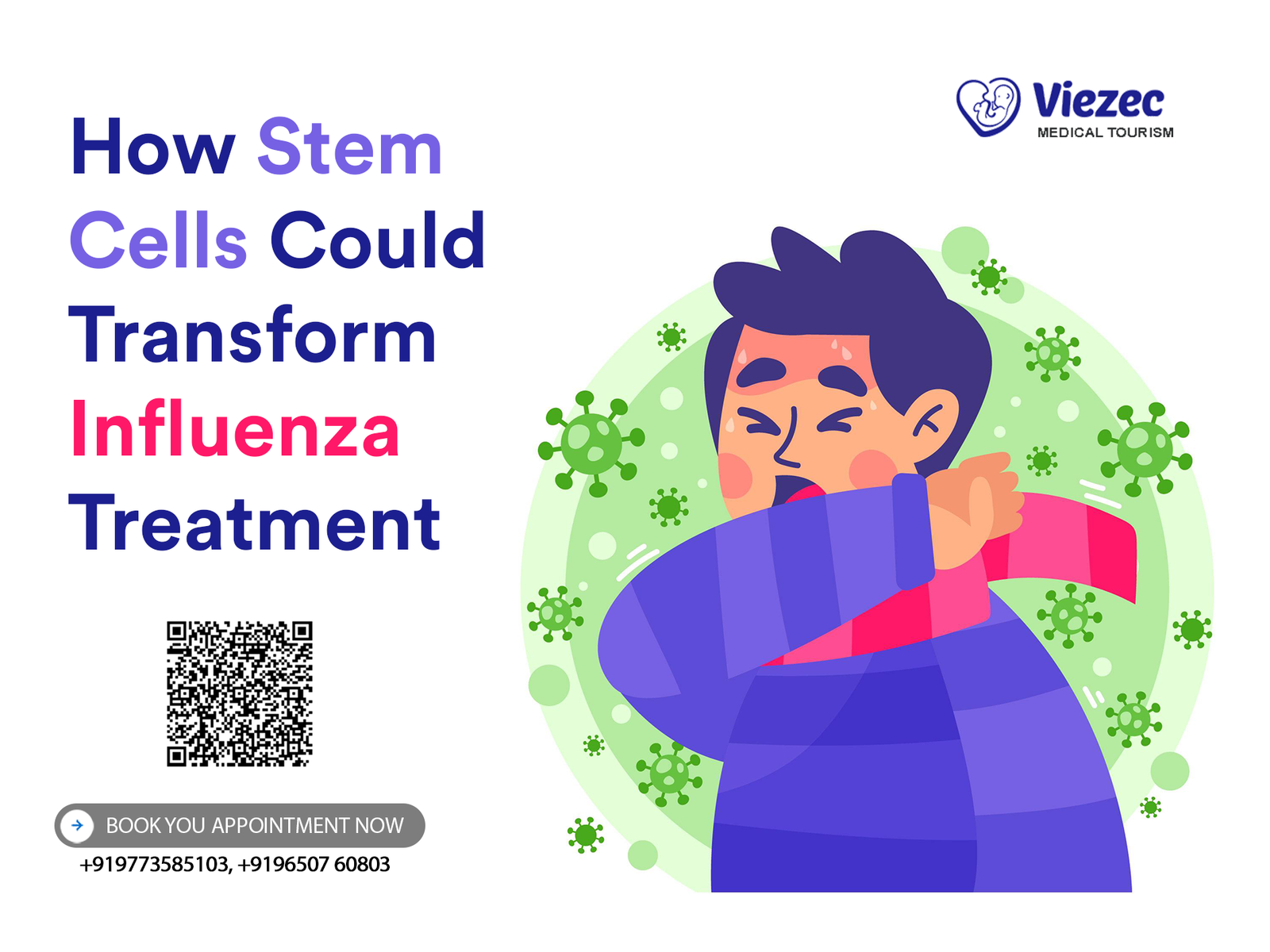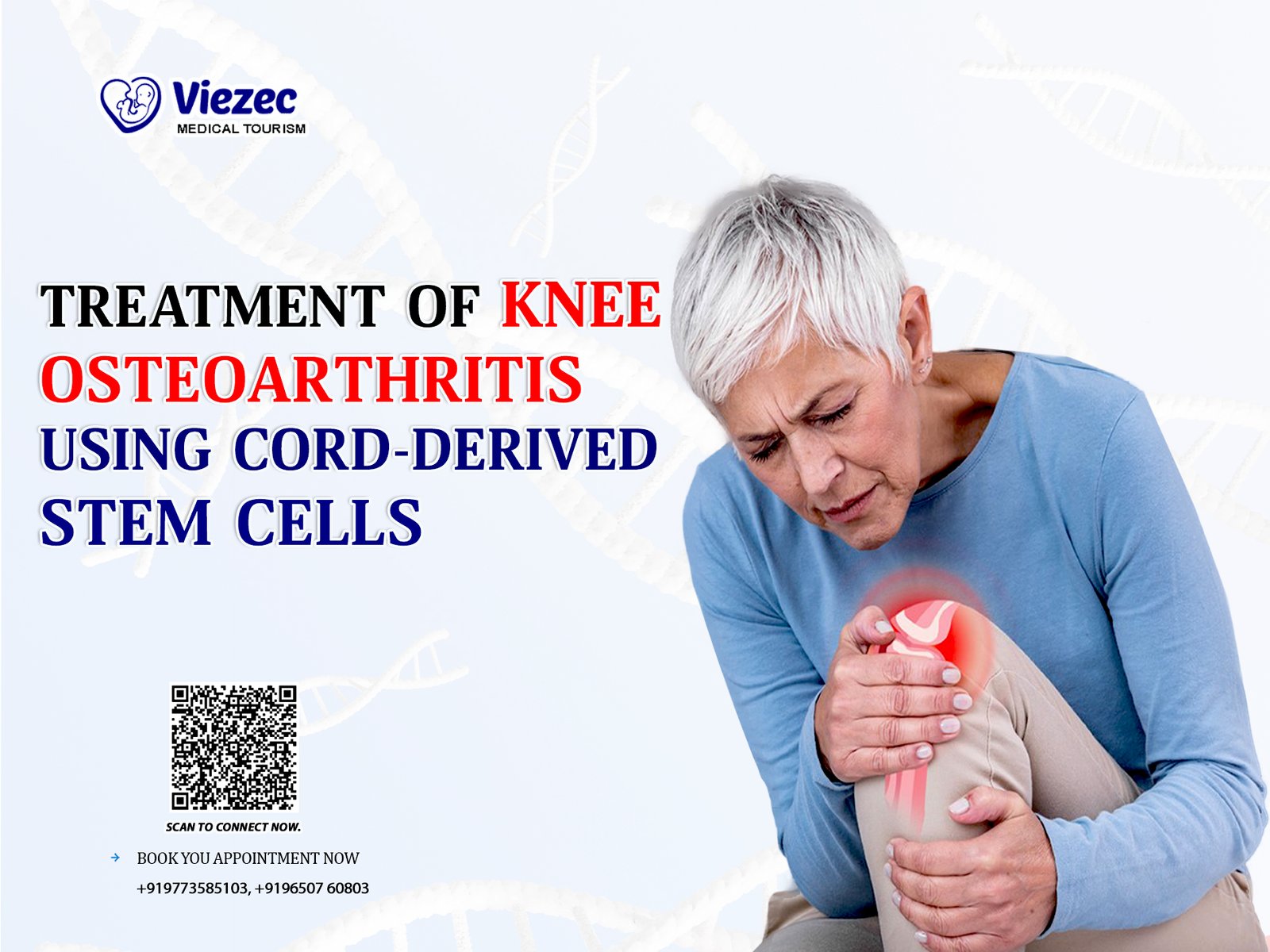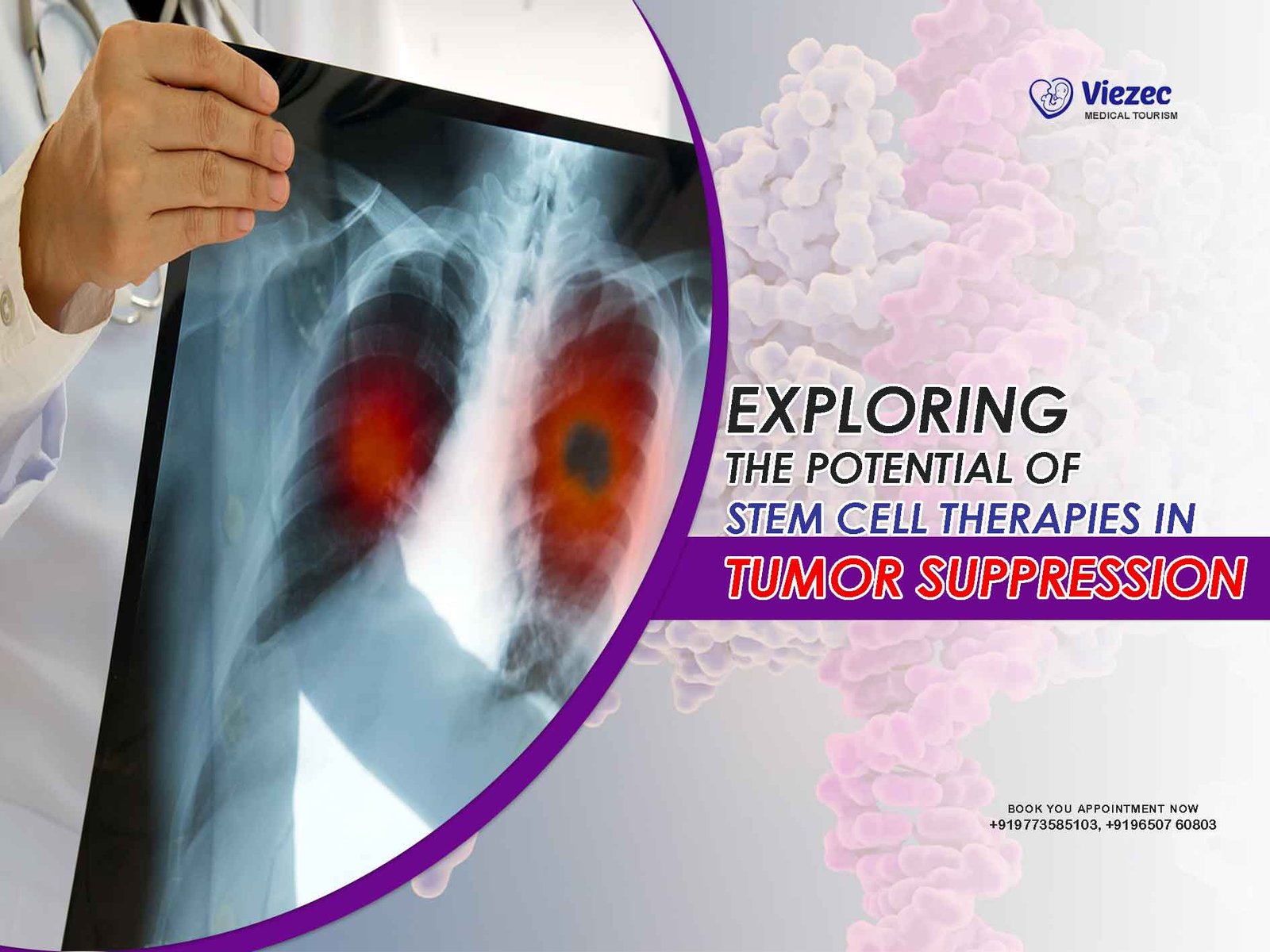Influenza remains a persistent global health threat, infecting millions annually and causing severe illness or death, particularly among vulnerable populations like the elderly and immunocompromised. Seasonal flu vaccines and antiviral drugs form the backbone of current prevention and treatment strategies, yet they face significant limitations. Vaccines require annual updates due to viral mutations, often resulting in mismatches that reduce effectiveness. Antivirals like oseltamivir can mitigate symptoms but lose potency against resistant strains, leaving gaps in care during pandemics or severe outbreaks. These challenges highlight the urgent need for innovative solutions. Enter stem cell research—a burgeoning field promising to revolutionize how we combat influenza. By addressing the root causes of treatment failures, stem cells could shift the paradigm from reactive to proactive, offering hope for more resilient and adaptive therapies.
What Are Stem Cells?
Stem cells are unique, undifferentiated cells capable of self-renewal and differentiation into specialized cell types, making them a cornerstone of regenerative medicine. They come in various forms: embryonic stem cells (ESCs), derived from early embryos, possess broad potential but raise ethical concerns; adult stem cells, found in tissues like bone marrow, are more limited in scope; and induced pluripotent stem cells (iPSCs), reprogrammed from adult cells, combine versatility with ethical viability. In medical research, stem cells serve as building blocks for repairing tissues, modeling diseases, and testing therapies. Their adaptability sparks interest in tackling complex conditions like influenza, where traditional approaches falter. Understanding stem cells’ capabilities lays the groundwork for exploring their transformative potential in flu treatment, from immune enhancement to tissue regeneration.
The Promise of Stem Cell Research in Medicine
Stem cell research has ignited a revolution in regenerative medicine, offering solutions where conventional treatments fall short. By harnessing their ability to repair, replace, or regenerate damaged cells, scientists have made strides in treating conditions like heart disease, diabetes, and neurodegenerative disorders. This promise stems from stem cells’ plasticity—their capacity to adapt and form diverse cell types—coupled with advancements in genetic engineering and cell culture techniques. In the context of infectious diseases like influenza, stem cells represent a frontier for innovation. Their potential to bolster immunity, regenerate tissues, and accelerate drug development positions them as a hot topic among researchers seeking breakthroughs. As influenza continues to challenge global health systems, stem cells offer a glimmer of hope for more effective, long-lasting solutions.
Understanding Influenza: A Biological Perspective
Influenza viruses, primarily types A and B, target the respiratory system, infiltrating cells in the nose, throat, and lungs. They bind to surface receptors, replicate rapidly, and trigger inflammation that damages tissues and impairs breathing. The body mounts an immune response, deploying white blood cells and antibodies to neutralize the virus, but this process can overreact, causing collateral damage like pneumonia. Symptoms—fever, cough, fatigue—reflect this battle, while severe cases reveal the virus’s capacity to overwhelm defenses. Seasonal strains evolve through antigenic drift, while pandemics arise from antigenic shift, complicating prevention efforts. Understanding this biological interplay is key to appreciating why stem cells, with their regenerative and immune-modulating properties, could offer a novel approach to mitigating influenza’s destructive cycle.
Why Current Influenza Treatments Fall Short
Current influenza treatments—vaccines and antivirals—struggle to keep pace with the virus’s adaptability. Vaccines, produced using egg-based or cell-based methods, take months to develop, leaving gaps during unexpected outbreaks. Their efficacy varies (40-60% in good years), undermined by viral mutations that render guesses about circulating strains inaccurate. Antivirals like Tamiflu reduce symptom duration if administered early, but resistance is rising, with some strains showing reduced sensitivity. These shortcomings exacerbate flu-related morbidity and mortality, particularly in high-risk groups. Production delays, limited access in low-income regions, and waning public trust in vaccines further compound the issue. As a result, researchers are turning to stem cells to address these gaps, seeking treatments that adapt to viral evolution and repair the damage left in its wake.
The Intersection of Stem Cells and Influenza
Stem cells intersect with influenza treatment by offering a multifaceted approach that transcends traditional methods. Unlike vaccines that preempt infection or antivirals that target viral replication, stem cells could enhance the body’s natural defenses, repair damaged tissues, and even streamline vaccine development. Their ability to differentiate into immune or respiratory cells positions them as a potential game-changer, addressing both prevention and recovery. Imagine a treatment that not only fights the virus but also heals the lungs it ravages—a paradigm shift from symptom management to holistic restoration. Early research hints at this possibility, with stem cells showing promise in preclinical models. This intersection marks a bold step toward redefining how we combat influenza, blending regenerative medicine with infectious disease management.
Stem Cells and Immune System Enhancement
Stem cells could supercharge the immune system against influenza by replenishing depleted immune cells and modulating responses. Mesenchymal stem cells (MSCs), for instance, secrete anti-inflammatory molecules that temper the cytokine storms often seen in severe flu cases. Hematopoietic stem cells (HSCs) can generate new white blood cells to replace those lost to infection, bolstering frontline defenses. This dual action—calming overreactions while reinforcing immunity—offers a balanced approach to fighting the virus. Studies in animal models suggest MSCs reduce lung inflammation and improve survival rates, hinting at their therapeutic potential. By enhancing the body’s ability to adapt and respond, stem cells could turn the tide against influenza’s unpredictable nature, providing a robust shield where traditional methods weaken.
Regenerating Lung Tissue Damaged by Influenza
Influenza wreaks havoc on lung tissue, causing cell death, inflammation, and scarring that impair breathing and invite secondary infections like pneumonia. Stem cells offer a regenerative lifeline, potentially repairing this damage by differentiating into alveolar cells—the lung’s oxygen-exchanging units. Research shows that MSCs, when introduced post-infection, reduce fibrosis and promote tissue healing in mice. Similarly, iPSCs can be engineered into lung-specific cells for transplantation, restoring function in damaged areas. This regenerative capacity could shorten recovery times and prevent long-term complications, addressing a critical gap in flu care. While human trials are nascent, the prospect of rebuilding lungs ravaged by influenza underscores stem cells’ transformative potential, merging repair with resilience.
Stem Cells as a Platform for Vaccine Development
Stem cells could revolutionize vaccine development by serving as adaptable platforms for producing and testing influenza vaccines. Traditional methods rely on eggs or cell lines, which are slow and strain-specific. Stem cell-derived systems, such as iPSC-generated respiratory cells, mimic human lung environments, enabling faster identification of effective antigens. These models could accelerate production timelines, critical during pandemics, by bypassing lengthy adaptation processes. Moreover, stem cells allow researchers to simulate immune responses, refining vaccine candidates before clinical trials. Early experiments suggest this approach could yield broader, more potent immunity, tackling multiple strains simultaneously. By streamlining development and enhancing precision, stem cells promise to keep vaccines ahead of influenza’s evolutionary curve.
Personalized Medicine: Tailoring Flu Treatments with Stem Cells
Stem cells pave the way for personalized influenza treatments by adapting to individual immune profiles. Using iPSCs derived from a patient’s own cells, researchers can create customized models to study how their body responds to flu strains. This could lead to tailored therapies—such as stem cell-derived immune boosters or lung repair agents—optimized for specific genetic or health factors. For instance, patients prone to severe inflammation might receive anti-inflammatory MSC infusions, while others get enhanced antiviral cell support. This precision contrasts with the one-size-fits-all approach of current treatments, potentially improving outcomes and reducing side effects. As personalized medicine gains traction, stem cells could make flu care as unique as the people it serves.
Stem Cells and Antiviral Drug Innovation
Enhancing Drug Discovery Through Stem Cell Models
Stem cells are revolutionizing antiviral drug development by providing human-relevant testing platforms. Traditional drug discovery often relies on animal models, which don’t fully mimic human responses to influenza. Stem cells, particularly those differentiated into lung or immune cells, offer a more accurate alternative. Scientists can expose these cells to flu viruses and test potential drugs, observing how they inhibit viral replication or boost immunity. This approach accelerates the identification of promising compounds, reducing trial-and-error phases. Moreover, stem cell models can replicate diverse human genetic backgrounds, ensuring drugs work across populations. By simulating real infection scenarios, these models pave the way for personalized medicine, where treatments are tailored to individual needs. As influenza evolves, this innovation could outpace the virus’s mutations, offering a proactive defense strategy.
Testing Antiviral Efficacy with Stem Cell-Derived Tissues
Stem cell-derived tissues, like lung organoids, are game-changers for testing antiviral efficacy. These miniature, lab-grown organs mimic the structure and function of human lungs, where influenza wreaks havoc. Researchers infect these tissues with flu strains and apply antiviral candidates, measuring outcomes like viral load reduction or cell survival rates. Unlike flat cell cultures, organoids provide a 3D environment that closely replicates human physiology, yielding more reliable results. This method has already shown promise in evaluating drugs like Tamiflu, revealing insights into dosage and timing. Additionally, it reduces reliance on animal testing, aligning with ethical research trends. As influenza strains grow resistant to existing drugs, stem cell-derived tissues could fast-track the development of next-generation antivirals, ensuring we stay ahead of seasonal and pandemic threats.
Role of Induced Pluripotent Stem Cells (iPSCs) in Flu Research
What iPSCs Are and Their Relevance to Influenza Studies
Induced pluripotent stem cells (iPSCs) are adult cells reprogrammed to an embryonic-like state, capable of becoming any cell type. In influenza research, iPSCs are invaluable because they can be derived from patients and transformed into lung, immune, or other flu-affected cells. This allows scientists to study how specific flu strains interact with human tissues at a cellular level. For example, iPSCs from individuals with varying immune responses can reveal why some people suffer worse symptoms. They also enable researchers to model flu progression in a controlled setting, offering insights into viral mechanisms and host defenses. As a renewable resource, iPSCs provide an endless supply of study material, making them a cornerstone of modern flu research.
Advantages of Using iPSCs Over Other Stem Cell Types
Compared to embryonic or adult stem cells, iPSCs offer unique advantages for influenza studies. They don’t require embryo use, sidestepping ethical controversies, and can be generated from easily accessible cells like skin or blood. This patient-specific approach ensures genetic diversity in experiments, unlike uniform embryonic stem cells. iPSCs also outshine adult stem cells, which have limited differentiation potential and are harder to harvest. Their ability to scale up in labs makes them ideal for high-throughput drug screening, where thousands of compounds are tested simultaneously. Additionally, iPSCs can be genetically edited to mimic flu-vulnerable populations, such as the elderly, enhancing research precision. These benefits position iPSCs as a superior tool for decoding influenza and designing targeted therapies.
Overcoming Influenza Complications with Stem Cells
Addressing Severe Flu-Related Issues Like Pneumonia
Influenza often escalates into complications like pneumonia, especially in vulnerable groups. Stem cells could intervene by repairing damaged lung tissue or modulating immune responses. Mesenchymal stem cells (MSCs), known for their anti-inflammatory properties, can be administered to reduce excessive inflammation—a key driver of pneumonia. Studies suggest MSCs release factors that heal alveolar damage, restoring lung function. Meanwhile, stem cell-derived lung cells could replace tissue destroyed by viral spread, offering a regenerative solution. This dual approach—calming immunity and rebuilding tissue—could transform outcomes for severe flu cases, preventing respiratory failure. Early trials in animal models show promise, with treated subjects exhibiting faster recovery. If successful in humans, this could redefine how we manage flu complications.
Potential to Reduce Mortality Rates
Stem cell therapies hold the potential to slash influenza mortality rates, particularly during pandemics. By mitigating complications like acute respiratory distress syndrome (ARDS), stem cells could save lives when standard treatments fail. For instance, stem cell infusions might stabilize patients by curbing cytokine storms—overzealous immune reactions that kill more than the virus itself. Data from related fields, like COVID-19 research, show stem cells improving survival in critical cases. Applied to flu, this could mean fewer ICU admissions and deaths, especially among the elderly and immunocompromised. Long-term, stem cells might even be stockpiled as a rapid-response tool for outbreaks, offering a lifeline where vaccines or antivirals fall short. This life-saving potential underscores their transformative promise.
Current Research on Stem Cells and Influenza
Key Studies Exploring Stem Cell Applications for Flu Treatment
Research into stem cells and influenza is gaining momentum globally. A 2023 study from the University of Tokyo used iPSCs to create lung models, identifying how flu viruses trigger inflammation. Another team at Stanford explored MSCs in mice, finding reduced lung damage post-infection. Meanwhile, a European consortium is testing stem cell-derived immune cells to enhance antiviral responses. These studies highlight diverse applications, from tissue repair to immune boosting. Clinical trials are also emerging, with early-phase tests assessing MSC safety in flu patients. Though still experimental, these efforts signal a shift toward stem cell-based solutions, blending cutting-edge science with practical outcomes.
Notable Breakthroughs and Findings
Recent breakthroughs underscore stem cells’ potential in flu treatment. In 2024, a Harvard team engineered iPSC-derived lung cells that resisted flu infection, hinting at future preventive therapies. Another milestone came from Australia, where MSCs halved recovery time in flu-infected pigs—a model close to humans. Researchers also discovered that stem cells secrete antiviral proteins, like interferons, naturally curbing viral spread. These findings suggest stem cells could serve as both therapy and shield, a dual role unseen in conventional treatments. Such advances are fueling optimism, with experts predicting clinical applications within a decade. Each breakthrough brings us closer to a flu-fighting revolution.
Challenges in Implementing Stem Cell-Based Flu Treatments
Scientific and Technical Hurdles
Turning stem cell research into flu treatments faces significant hurdles. One challenge is ensuring stem cells differentiate consistently into the right cell types—lung or immune—without forming unwanted tissues. Viral contamination during cell culture is another risk, potentially worsening infections. Delivery methods also pose problems: how do we get stem cells to the lungs efficiently? Current techniques, like intravenous infusion, lose potency as cells get trapped in other organs. Plus, influenza’s rapid progression demands fast-acting therapies, while stem cell preparation is time-intensive. Overcoming these barriers requires advances in bioengineering and real-time monitoring, tasks that demand years of refinement.
Scalability and Production Concerns
Even if scientifically sound, stem cell treatments must scale to meet global flu demand. Producing billions of cells per patient is costly and logistically daunting. Bioreactors can mass-produce stem cells, but maintaining quality across batches is tricky—variations could reduce efficacy or safety. Storage is another issue: stem cells need cryogenic freezing, complicating distribution, especially in low-resource areas. Automation and standardization could help, but these technologies are still maturing. Until production becomes affordable and widespread, stem cell therapies risk remaining a niche solution, inaccessible to most flu sufferers.
Ethical Considerations in Stem Cell Research for Influenza
Debates Surrounding Stem Cell Use
Stem cell research for influenza isn’t without controversy. While iPSCs avoid embryonic concerns, earlier studies using embryonic stem cells sparked ethical debates over embryo destruction. Some argue that manipulating human cells crosses moral lines, fearing “designer” therapies or unintended consequences like cancer. Public perception varies—surveys show support for medical advances but wariness of overreach. Researchers must navigate these tensions, ensuring transparency to maintain trust. For influenza, the life-saving potential often outweighs objections, yet ethical scrutiny remains a constant companion to innovation.
Balancing Innovation with Ethical Boundaries
Striking a balance between progress and ethics is key. Guidelines like the International Society for Stem Cell Research’s code emphasize patient safety and consent, especially for iPSC donors. Scientists avoid germline editing—changes passed to offspring—to prevent ethical quagmires. For flu treatments, the focus is therapeutic, not enhancement, easing some concerns. Still, equitable access looms large: if only wealthy nations benefit, ethical questions of justice arise. By prioritizing responsible innovation, the field aims to harness stem cells’ power without overstepping societal values.
Regulatory Hurdles for Stem Cell Therapies
Approval Processes for Stem Cell-Based Treatments
Getting stem cell therapies approved for influenza is a labyrinthine process. In the U.S., the FDA demands rigorous preclinical and clinical data, proving safety and efficacy. Phase trials can take 5-10 years, delaying deployment against fast-moving flu seasons. Regulators scrutinize every step—cell sourcing, manufacturing, and patient outcomes—fearing risks like tumor formation. Expedited pathways exist for pandemics, but even these require substantial evidence. This cautious approach protects patients but slows innovation, a tension felt acutely in flu management.
Global Differences in Regulation
Regulatory landscapes vary worldwide, complicating stem cell therapy rollout. Japan’s fast-track system has approved stem cell treatments quicker than the U.S.’s stringent process, while Europe’s EMA balances speed and caution. China, meanwhile, has looser rules, raising safety concerns but accelerating trials. These disparities could create a patchwork of availability—some countries adopting flu therapies years ahead of others. Harmonizing standards via international bodies like the WHO could streamline access, but political and scientific divides make this a distant goal.
Accessibility of Stem Cell Treatments
Economic Challenges in Developing and Distributing Therapies
Stem cell treatments for influenza face steep economic barriers. Culturing cells, ensuring purity, and scaling production drive costs into millions per batch. Clinical trials add further expense, often funded by grants or private investment with no guaranteed return. Distribution—requiring cold chains and trained staff—compounds the price tag. For a disease as widespread as flu, affordability is critical, yet current estimates suggest therapies could cost thousands per patient. Without subsidies or breakthroughs in cost-cutting, these treatments risk being luxuries, not solutions.
Potential Impact on Healthcare Systems
High costs could strain healthcare systems, especially in low-income regions. If stem cell therapies reduce flu hospitalizations, they might offset expenses long-term—fewer ICU stays mean big savings. However, upfront investment is a hurdle: governments or insurers must fund early adoption before benefits kick in. Public-private partnerships could ease the burden, but profit motives might prioritize rich markets over poor ones. The challenge is ensuring cost doesn’t widen health disparities, a risk if stem cells remain elite medicine.
Stem Cells as a Game-Changer for Influenza
Long-Term Vision for Stem Cell Applications in Flu Management
The future of stem cells in flu treatment is bold and ambitious. Imagine stockpiles of ready-to-use stem cells deployed during outbreaks, repairing lungs or boosting immunity on demand. Scientists envision “off-the-shelf” therapies—universal stem cells compatible with all patients—eliminating custom production delays. Gene-edited stem cells could even preempt flu damage, offering seasonal protection rivaling vaccines. Over decades, this could shift flu from a perennial killer to a manageable condition, akin to how antibiotics tamed bacterial infections. The vision hinges on today’s research bearing fruit.
Predictions for the Next Decade of Research and Treatment
By 2035, experts predict stem cell therapies will enter mainstream flu care. Early adopters might deploy MSC infusions for severe cases within five years, with iPSC-based drugs following as production scales. Advances in AI could optimize cell design, slashing costs and timelines. Pandemics will likely accelerate funding, pushing regulators to act faster. Some foresee stem cells integrating with vaccines, creating hybrid defenses. While full transformation may take longer, the next decade promises tangible progress, with pilot programs already reshaping flu seasons.
Collaborative Efforts in Stem Cell and Flu Research
Role of Governments, Universities, and Private Companies
Stem cell research for influenza thrives on collaboration. Governments fund foundational studies—like the NIH’s grants—while universities like MIT drive innovation with cutting-edge labs. Private companies, such as Moderna, bring scalability and market savvy, turning discoveries into therapies. Partnerships amplify impact: a 2024 U.S.-Japan initiative pooled resources to test stem cell lung models, yielding faster results than solo efforts. Each player fills a gap, from policy support to profit-driven delivery, creating a robust ecosystem for flu solutions.
Importance of Global Cooperation
Influenza knows no borders, making global cooperation essential. Sharing data—like how a flu strain affects stem cells—prevents redundant work and speeds breakthroughs. The WHO could coordinate trials across continents, ensuring therapies suit diverse populations. Joint funding, like the EU’s Horizon program, tackles cost barriers, while tech transfers help poorer nations adopt solutions. Past pandemics prove collaboration works: COVID-19 vaccines emerged from global teamwork. For stem cells to curb flu worldwide, this unity must deepen.
How Stem Cells Could Reduce Influenza’s Global Burden
Decreasing Flu-Related Deaths and Hospitalizations
Stem cells could lighten influenza’s toll by cutting deaths and hospital stays. If therapies like MSC infusions halt complications like ARDS, fewer patients will need ventilators or die. A 2023 model estimated a 30% drop in flu mortality with widespread stem cell use—a game-changer for the 290,000-650,000 annual deaths reported by the WHO. Hospitalizations could fall too, as repaired lungs recover faster, freeing beds during surges. This relief would be a boon in pandemics, where systems buckle under pressure.









